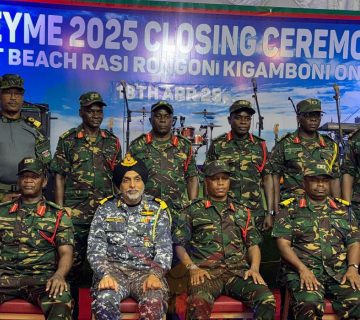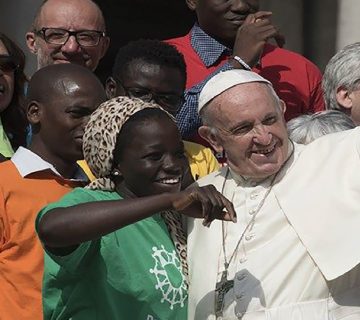Tanzania government’s perception that pastoralism is robbing Tanzania of its tourism revenue has rubbed Kenya the wrong way. When Kenyan Maasai herders crossed the Kenya-Tanzania border with over 1,000 cattle in October 2017 in search of pasture, the herders were arrested, and their animals seized. President Pombe Magufuli ordered Tanzanian officials to auction the cows, and when the cattle owners failed to raise TShs 500 million (KSh. 23 million) to prevent that from happening, the order was effected. He reiterated that future occurrences would not be tolerated, and would be dealt with according to existing border laws. He also warned pastoralist communities from his country that he would not intervene if neighboring countries confiscate their cattle.
President Magufuli intimated that his administration would not allow livestock from foreign countries to enter Tanzania illegally. He stated that pastoralist communities (including Kenya Maasai) who have encroached on some parts of Tanzania’s parks denying his country tourism revenues had for a long time made Tanzania a grazing field. In addition, Magufuli argued that his administration was responsible for protecting Tanzania’s parks and environment to attract tourists, and he would do so at all costs. The President’s directive brought to light how government policies are affecting the traditional Maasai culture.
In a rejoinder to the development, Kenya, through the Foreign Affairs Ministry, wrote a protest letter deploring the harsh treatment. The sentiments were echoed by Kajiado County government, which suggested diplomacy as the best option for resolving issues that affect East Africans. The County government claimed that cattle from the two countries are usually driven across borders in search for pasture during dry seasons. Kajiado County borders Tanzania, and is home to some of the Kenyan Maasai. According to Kenya Veterinary Association (KVA), the Tanzanian policy is flawed given that millions of wildebeests move between the two countries every year. KVA proposed the establishment of common interventions along the border with Tanzania to prevent animal-related conflict. This situation can be understood in the light of two opposing elements, traditional and modern cultures. Tanzania government view pastoralists’ rotational use of land as an outdated practice that needs to be reviewed. Pastoralist land is considered to be empty, and under-utilized, requiring different land uses for maximum benefit.
In 2016, Tanzania tourist revenues increased to USD 2 billion, up from USD 1.9 billion in 2015. During the same period, 500,000 people benefitted directly, and one million others benefitted indirectly through employment in the tourism industry. This is one of the reasons why President Magufuli is prioritizing tourism-related activities over pastoralism. In his research on the land policy and the Maasai in Tanzania, Lilian Joseph Looloitai noted that factors such as market development and tourism have created pressure and competition for land. States also have policies that govern the use of the land. Tanzania’s Kilimo Kwanza (agriculture first) policy, for example, prioritizes agriculture. This includes prioritizing crop cultivation and expansion of farms in order to increase food security. At the same time, pastoralists are required to reduce the number of livestock to prevent overgrazing and contribute to environmental preservation.
The Maasai have a deep love for, and almost sacred relationship with, their cattle. They believe that a man’s wealth is measured by the number of cattle he has. They also believe that cattle are a godsend gift to them, and they are the custodians of all the cattle on earth. Most Maasai lead a semi-nomadic life and their houses are loosely constructed and semi-permanent. These are usually small, circular houses built (by their women) using mud, grass, wood, and cow–dung. Cattle have been the main source of livelihood for the Maasai. The livestock provides them with food (milk and meat) and a source of wealth and money. This is one reason why they are against government policy.
The relationship between the Kenyan Maasai and their Tanzanian counterparts can be traced back to the Scramble for, and Partition of Africa in the early 19th century. The Partition of Africa led to the creation of Kenya and Tanzania among other African countries. The borders, as drawn by colonialists, created Kenya Maasai and Tanzania Maasai as some Maasai families were forced to live on either side of the border. The separated families continued to interact with each other across the Kenya-Tanzania border albeit with less intensity. In the pre-colonial period, Maasai territory measured around 321,868 square kilometers. The territory initially occupied the areas that are now Amboseli National Park, Nairobi National Park, Maasai Mara game reserve, and Tsavo National Park. In Tanzania, the Maasai land covered present-day Manyara National Park, Ngorongoro National Park, Tarangire, and Serengeti National Park.
After the Scramble for Africa, the British occupied Kenya while as Germans administered some sections of Tanzania. In 1904, the Maasai signed the Anglo-Maa treaty with the colonial government which gifted the colonialists a 100-year lease on the ancestral lands of the Maasai. The treaty was later replaced with another one in 1911 that took the Maasais’ best lands to pave way for the settlers’ ranches. This reduced Maasai land by 60 per cent, and confined the Maasai people to present day Narok and Kajiado areas. The Maasai in Tanzania were forced out of their fertile lands between Mt Kilimanjaro and Mt Meru. The land was then converted to national parks and wildlife reserves. These are the present day Maasai Mara, and Serengeti National Park.
After the independence of Kenya and Tanzania, successive governments did not interfere with the culture of the Maasai. This was despite Kenya and Tanzania identifying themselves with two distinct political economic and social philosophies. Tanzania adopted the Ujamaa system (African socialism) while Kenya identified itself with capitalism. The Ujamaa policy meant that Tanzania would be divided into villages to protect the infant industries from external competition. The Ujamaa system proved to be a challenge in terms of the relation with the neighboring countries. For instance, the collapse of the East African Community in 1977 and subsequent closure of borders by Tanzania complicated relations between the neighbouring countries. The relation was revived following the signing of the Treaty of EAST African Co-operation in 1993, followed by the 2004 East Africa Custom Union protocol. The protocol postulates that there should be cross-border investments, and liberalization of intra-regional trade in goods. This entails free movement of goods, persons, services, labour and capital while guaranteeing rights to residence. However, this (protocol) has become a contest between Tanzania’s current administration, and neighbouring countries.
There is a need to employ measures aimed at dealing with the grazing on the frontiers of Kenya and Tanzania to counter these challenges. These will entail signing agreements to ensure peaceful access and sharing of the available natural resources among the Kenyan Maasai and the Tanzania Maasai. This will also ensure that the Maasai engage in co-operative rehabilitation of water resources in strategic cross-border areas. The two governments should negotiate access to pasture. There is also a need for creating investments on the local economy and diversifying livelihoods of the communities.
Ian Mwenda is a Research Assistant at the HORN Institute



